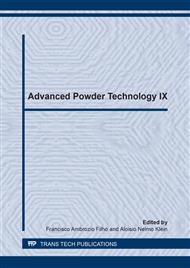p.359
p.367
p.373
p.377
p.383
p.388
p.392
p.398
p.404
Influence of Temperature on Ductile-Fragile Behavior
Abstract:
The article to be presented will cover the whole process done in a fracture test for impact, taking into account the thermal treatment of the sample to be studied. The main objective of this article is to observe, verify, analyze and understand how the temperature difference of several samples influences the type and appearance of the fracture. The impact test have a great importance in industry, is through this that you can verify that the material is ideal for application in the production of equipment and vehicles that operate in high or low temperatures. The evaluation criteria of this trial are the energy absorbed by the sample, and the percentage of its characteristic lateral extension, and the percentage of fracture, ductile or fragile, and corresponding to a ductile fracture mode, in which the test at higher temperatures, the impact energy is relatively large, and fragile fracture mode, being one that as the temperature decreased, the impact energy will suffer decline. The most important result of the impact test is the measure of the energy absorbed by the test body to deform and break, measured by the variance of the gravitational potential energy of the hammer (machine component of the impact test) before and after impact. Therefore, providing the conclusion that the smaller the energy absorbed by the sample, more fragile it is depending on the temperature applied.
Info:
Periodical:
Pages:
383-387
Citation:
Online since:
December 2014
Authors:
Keywords:
Price:
Сopyright:
© 2014 Trans Tech Publications Ltd. All Rights Reserved
Share:
Citation:


